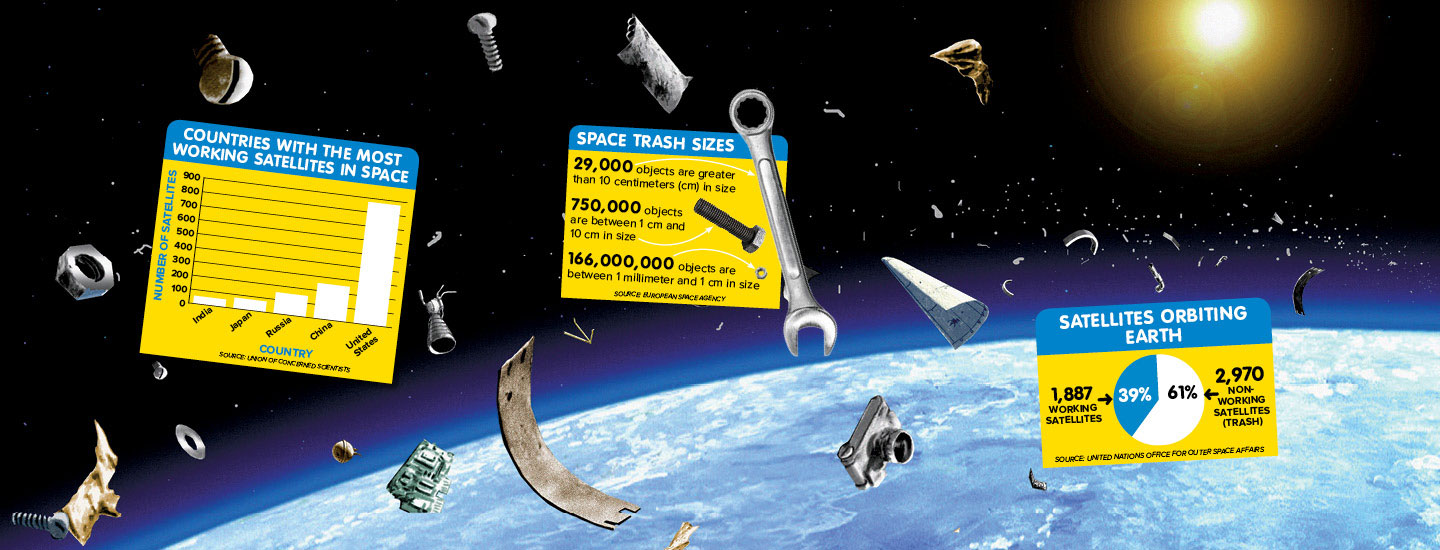Hundreds of miles above our heads is a whole lot of trash. NASA estimates there are millions of pieces of garbage that travel around Earth. Most items are no bigger than a marble. But in space, there’s nowhere to throw that trash out!
One company, Astroscale, is trying to solve the space trash problem. It hopes to make the skies safer for satellites and the International Space Station (ISS).
Any object launched into space creates waste. These objects orbit Earth at a speed of 17,500 miles per hour. So while most space trash is smaller than a fingernail, it’s dangerous. “Even a small paint chip can crack a window on the ISS,” says Chris Blackerby. He works at Astroscale.
The company is developing a small magnetic plate. It would be added to future satellites launched into space. If a satellite stops working, a drone spacecraft called ELSA would pick it up using magnets. ELSA would drag the satellite toward Earth until gravity took over. When the satellite hits Earth’s atmosphere, it would burn up.
The first test of ELSA will launch in 2020. But even if it works, ELSA will only prevent new trash from being made. Astroscale is also working on a satellite with a robotic arm. It would collect existing space trash.
“Collisions in space don’t happen that often,” Blackerby says. But this could change. Governments and companies will launch more satellites in the future. “It’s a problem we need to solve now,” he says.
Space has a lot of trash. NASA estimates there are millions of pieces of garbage in space. It travels around Earth. Most items are no bigger than a marble. But in space, there’s nowhere to throw that trash out!
One company is trying to solve this problem. It is called Astroscale. It hopes to make the skies safer. This would help satellites and the International Space Station (ISS).
Any object launched into space creates waste. Such objects orbit Earth. They move at a speed of 17,500 miles per hour. Most space trash is smaller than a fingernail. But it’s still dangerous. “Even a small paint chip can crack a window on the ISS,” says Chris Blackerby. He works at Astroscale.
The company is developing a small magnetic plate. It would be added to future satellites. Say a satellite stops working. A drone spacecraft called ELSA would pick it up using magnets. ELSA would drag the satellite toward Earth. Then gravity would take over. The satellite would burn up when it hit Earth’s atmosphere.
The first test of ELSA will launch in 2020. But it will only prevent new trash from being made. So Astroscale is working on another satellite. It has a robotic arm. It would collect existing space trash.
“Collisions in space don’t happen that often,” Blackerby says. But this could change.
Governments and companies will launch more satellites in the future. “It’s a problem we need to solve now,” he says.

